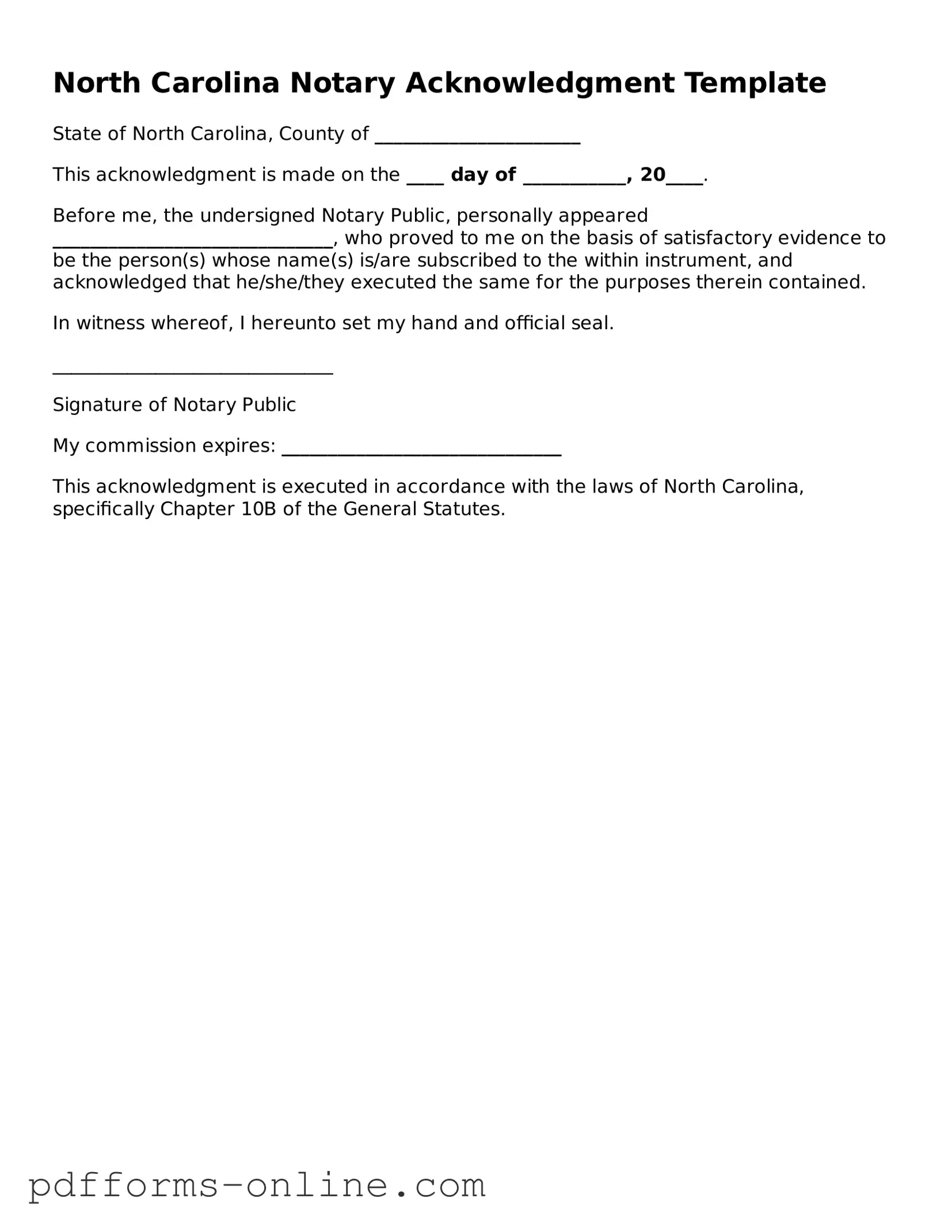Valid North Carolina Notary Acknowledgement Template
The North Carolina Notary Acknowledgement form is a document that verifies a person's signature on a legal document. This form ensures that the signer is who they claim to be and that they signed the document willingly. To get started with the Notary Acknowledgement form, fill it out by clicking the button below.
Open This Notary Acknowledgement Online
